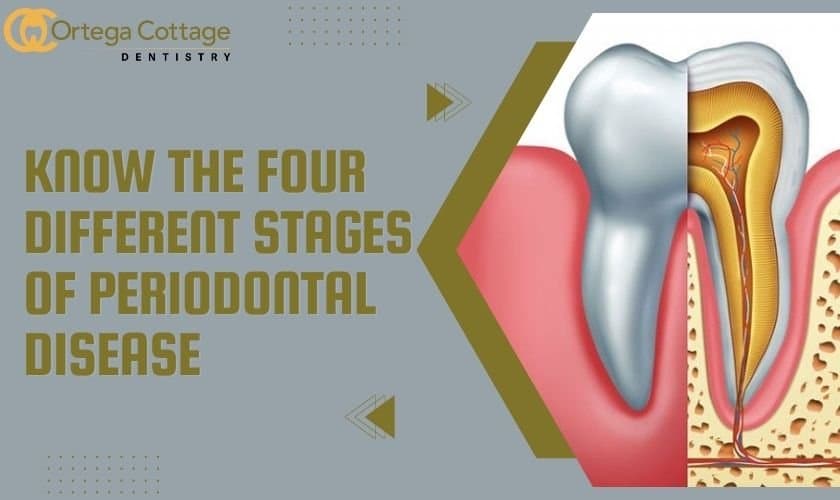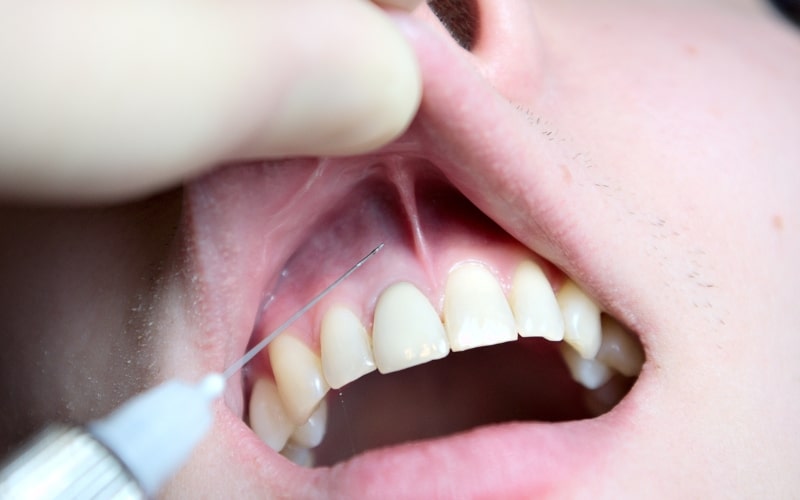27382 Calle Arroyo, San Juan Capistrano, CA, 92675

Periodontal disease, often known as gum disease, is exceedingly common and can be dangerous if not properly managed. When it comes to suffering from gum disease, age is no barrier, and it can lead to tooth loss. Periodontal problems may also lead to the development of other underlying medical issues. As a result, it is critical to treat the sickness as soon as possible. This condition progresses in stages, and understanding them may help in accurate diagnosis. Let’s look at the different stages of periodontal disease.
What Is Periodontal Disease?
Let us first define periodontal disease before moving on to the stages. Gum disease is a condition in which the gum tissues get infected. If the virus spreads, it might have significant consequences. Gum disease, in its severe stages, causes a lot of pain and suffering. Advanced stages of the disease are difficult to control, and surgery is indicated. In its early stages, the disease can be managed and even reversed.
What Are The Different Stages Of Periodontal Disease?
Are you trying to figure out if you have a gum infection? Don’t worry; our dentists at Ortega Cottage Dentistry will take care of you. For better understanding, the various stages of the disease have been listed in the sections below. Consult your dental hygienists and follow their advice to avoid developing this disease. Gum disease is categorized into four phases based on the severity of the infection.
- Gingivitis – Gingivitis is the initial stage of the infection. It is only at this point that the symptoms can be reversed. Maintaining a proper oral hygiene routine can be an effective way to do so.
Excess plaque buildup is the most common cause of gingivitis. Your infection could be the result of a bad dental hygiene habit. Plaque builds up as a result of improper and irregular brushing and flossing. Halitosis is caused by releasing a milky white liquid from your gums. If your foul breath persists, you are most likely suffering from gingivitis. Before your infection becomes irreversible, you should see your dentist right away. A good gingivitis treatment strategy might keep you from losing your teeth.
- Early Periodontitis – Have you missed your gingivitis treatment window? Don’t be concerned. The infection can be handled even in the second stage. The plaque hardens into tartar at this point. At this point, the infection may have migrated to your bones. Early periodontitis is characterized by pale gums and gum pockets. Periodontal therapy will assist you and prevent your disease from getting worse.
- Moderate Periodontitis – It’s when things start to get serious. Your tongue tastes odd, and your gum pockets expand beyond their normal size. At this point, your teeth may begin to wobble. If you detect any of these changes, make an appointment with your dentist. A deep-cleaning treatment will help you get rid of the bacterial accumulation and feel better. However, if you ignore the infection at this point, you will have shifting teeth. Most of the time, you will observe particles of blood in your mouth cavity.
- Advanced Periodontitis – There is no turning back now that we have reached the end of the process. At this level, you’ll be in excruciating pain. Your gums will swell and regularly discharge pus. Bone loss is a significant concern, and halitosis is very common. To prevent tooth loss due to advanced periodontitis, dental surgery is required. Gum recession will occur if therapy is not received, resulting in future dental health issues.
At Ortega Cottage Dentistry, we offer top-quality periodontal care in San Juan Capistrano, CA, and nearby. So, if you suffer from problems related to gum disease, get in touch with us without any further delay.





